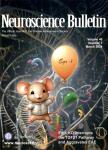Recovery mechanisms of somatosensory function in stroke patients: implications of brain imaging studies
Recovery mechanisms of somatosensory function in stroke patients: implications of brain imaging studies作者机构:Department of Physical Medicine and Rehabilitation College of Medicine Yeungnam University
出 版 物:《Neuroscience Bulletin》 (神经科学通报(英文版))
年 卷 期:2013年第29卷第3期
页 面:366-372页
核心收录:
学科分类:0710[理学-生物学] 1002[医学-临床医学] 1001[医学-基础医学(可授医学、理学学位)] 100204[医学-神经病学] 10[医学]
基 金:supported by the DGiST R&D Program of the Ministry of Education Science and Technology of Korea(13-BD-0401)
主 题:stroke somatosensory recovery brain mapping brain plasticity
摘 要:Somatosensory dysfunction is associated with a high incidence of functional impairment and safety in patients with stroke. With developments in brain mapping techniques, many studies have addressed the recovery of various functions in such patients. However, relatively little is known about the mechanisms of recovery of somatosensory function. Based on the previous human studies, a review of 11 relevant studies on the mecha- nisms underlying the recovery of somatosensory function in stroke patients was conducted based on the fol- lowing topics: (1) recovery of an injured somatosensory pathway, (2) peri-lesional reorganization, (3) contribu- tion of the unaffected somatosensory cortex, (4) contribution of the secondary somatosensory cortex, and (5) mechanisms of recovery in patients with thalamic lesions. We believe that further studies in this field using combinations of diffusion tensor imaging, functional neuroimaging, and magnetoencephalography are needed. In addition, the clinical significance, critical period, and facilitatory strategies for each recovery mechanism should be clarified.



